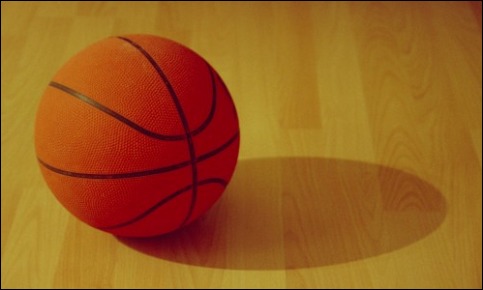It was a momentous occasion at the time, but the 65th anniversary of what now ranks as one of the most significant sporting events held in the state of Maryland went practically unnoticed last month.
On Feb. 12, 1952, Morgan State University’s basketball team hosted Loyola College (now University). It was played in a new, state-of-the-art field house, which proved to be a perfect setting for a game that had historic implications.
That game was the first interracial basketball game played south of the Mason-Dixon line, a fact that drew much more attention from area newspapers than the opening of a new athletic venue. Talmadge Hill was Morgan’s head coach at the time, and the building would bear his name. The visitors were coached by Emil “Lefty” Reitz, who years later would be similarly honored by Loyola.
Ed “Nap” Doherty, one of the stars in Loyola’s thrilling, 65-63, final-second win and later the coach at his alma mater, remembers the historic significance and the quality of play.
“The one thing I always remembered was that it was played on [Abraham] Lincoln’s birthday,” Doherty said. “And that was back when there were holidays for both [George] Washington and Lincoln. It just seemed so symbolic.”
Doherty doesn’t recall whether the game was part of the original schedules for the two teams or if it was an “add-on” attraction for the opening of the new gym at Morgan, with the date on Lincoln’s birthday intended to emphasize the historic nature of the game. In his book “Running With The Greyhounds,” former player Jimmy “Jumpshot” Smith notes Morgan was looking for an attractive, local game to open its new field house. As defending Mason-Dixon Conference Champions, Loyola was a perfect fit.
A matchup between schools less than five miles apart and bordering on Cold Spring Lane in north Baltimore is far more realistic today than it was in 1952, but Doherty said what might be today’s perception wasn’t reality then.
“It was not like ‘We’ve got to beat these guys,'” Doherty said. “I don’t think anybody looked at it like that at all. It wasn’t a case of black players against white players.
“We had played against teams that had black players, so it wasn’t anything new for us. Plus, I was from Brooklyn, and Joel Hittleman was from New York, and we played a lot of games on the playgrounds against some teams from Harlem. So I don’t think anybody thought of it as us doing something special.”
But, of course, it was special — and so was the game.
“It was a capacity crowd, the enthusiasm and the cheerleading was unbelievable,” Doherty said. “It was like that the entire game. I don’t think there was any other game that I ever participated in that had more enthusiasm than that one.”
The game itself proved to be one for the ages — in more ways than one. It see-sawed back and forth. Morgan held a slim lead most of the game. But after Hittleman tied the score at 63-63, Loyola regained possession with 2:30 remaining, and that’s when it turned into “showtime” for Doherty, who dribbled away all but a few of the remaining seconds before finding Hittleman on a backdoor cut and making the pass to set up the winning basket with only a few seconds left.
“Teams didn’t do a lot of pressing in those days, and of course there was no [shot] clock,” said Doherty, who still ranks as one of the top players in Loyola history, as well as the school’s second-winningest coach (behind only Reitz) with 176 wins. A noted ball-handler and passer in addition to his scoring ability, Doherty’s performance during the final minutes produced one of the funniest lines and best compliments.
“After the game, a couple of guys came into the locker room and said they wanted to meet the ‘White Globetrotter,'” Doherty said with a laugh, recalling from memory details of an event that exceeded his, and many other, expectations.
“It was the most memorable game I ever played in,” said Doherty, whose career spanned a lot of meaningful games for the Greyhounds.
Details and pictures from this historic game are one highlight from Smith’s book, which was a labor of love, he said, and a way for him to thank his parents, friends and coaches who inspired his career. Information is available at runningwiththegreyhounds.webs.com.
On a personal note while on the subject of books written by friends that became a labor of love, I can recommend “What Would I Tell Him…” — a unique autobiography by Keith Humphries that recounts living after losing a father at a young age. There are many intimate but nonintrusive moments, as Humphries recounts his life growing up, in school, on the sandlots, and as a parent and grandparent.
Humphries’ own labor of love began early, as he wondered what it would be like if he had a chance to tell his dad about his life. It’s a journey of some poignant tales along the way before taking a dramatic turn of its own when he was diagnosed with Stage 4 lung cancer.
Not long after that diagnosis, while participating in the LUNGevity Foundation’s Breathe Deep Baltimore walk at Camden Yards sponsored by Monica Barlow, the Orioles’ late, beloved director of public relations, Humphries realized they had the same diagnosis. They became close email friends and warriors for the LUNGevity cause, which Humphries supports in Monica’s memory as he continues his own battle.
“What Would I Tell Him…” is a story without an ending, but with a captivating journey. Books are available through Amazon.
Jim Henneman can be reached at JimH@pressboxonline.com.

